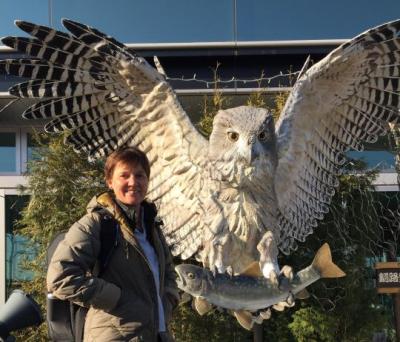Susan Myers on her recently completed tour, Cambodia
Cambodia was fabulous as always! The weather was a little hotter and drier than usual but the birds, mostly, cooperated. On top of the great birds, Angkor was amazing, the Cambodian people were charming and the food was delicious, exotic and memorable.
We started our tour in Siem Reap, a charming city located on the doorstep of the World Heritage site, the incomparable Angkor Wat and its many associated temples. Using Siem Reap as our base we explored various birding sites, including a visit to Prek Toal, a waterbird sanctuary located on the east side of Tonle Sap Lake. Tonle Sap is the largest lake in Southeast Asia and one of the most remarkable in the world due to its unique flow reversal from the Tonle Sap River. The lake is the food bowl of Cambodia and its vastness has to really be seen to be believed! The diverse and abundant birdlife to be found at the sanctuary is also astounding and exploring this area was an unforgettable experience.
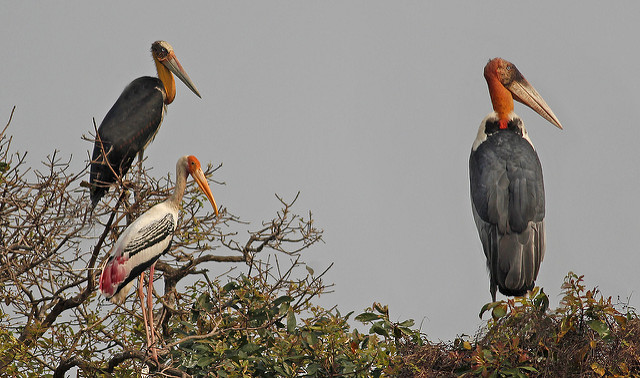
Greater (right) and Lesser Adjutants and a Painted Stork Image: David Fisher
Venturing further afield, we journeyed out for a three day stay in the remote village of Tmatboey - an experience with a very different place and culture. We birded out and around the rice fields dotted through the dry forests here, spying White-shouldered Ibis, seven species of woodpecker including the fancy Black-headed Woodpecker and a wonderful family of Great Slaty Woodpeckers, the diminutive Collared Falconet, and a host of others special birds. On our journey back to Siem Reap, our local guy Mony expertly spotted a White-rumped Falcon, a much hoped for rarity that we were able to observe at length.
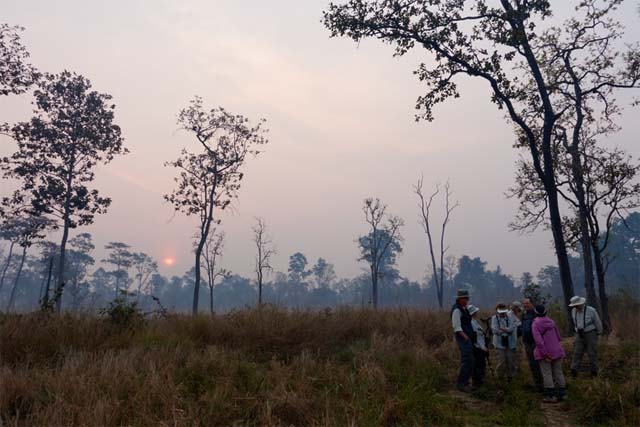
Watching and waiting as the sun comes up over the Tmatboey woodlands
Later during our tour, we spent a day around the ancient ruins of Angkor, an unforgettable experience; this really is living history! Angkor means Capital City in Khmer, the language of Cambodia, and its centerpiece is Angkor Wat, the immense temple that is Cambodia’s most famed symbol (it’s depicted on the national flag). But there are many other remarkable ancient buildings and religious sites, including Bayon, known for its many serene, smiling stone faces as shown in this photo, and Ta Prom, popular for its atmospheric overgrown appearance. And there’s an added bonus of some excellent birding throughout the whole ancient city.
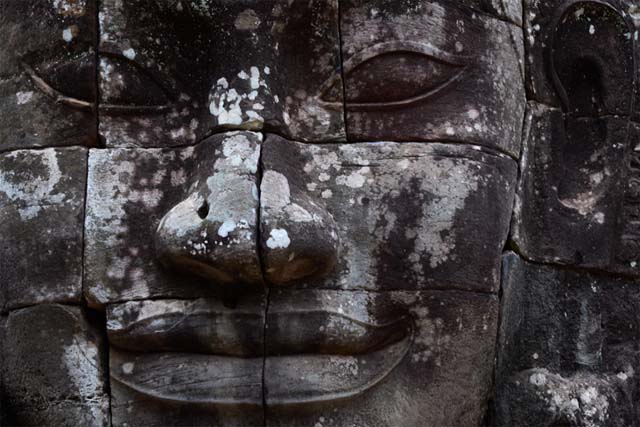
the stone faces of Ta Phrom
From Siem Reap we continued east to the delightful town of Kratie to look for the near endemic Mekong Wagtail, stopping to buy some jackfruit en route. It’s the world’s largest fruit.
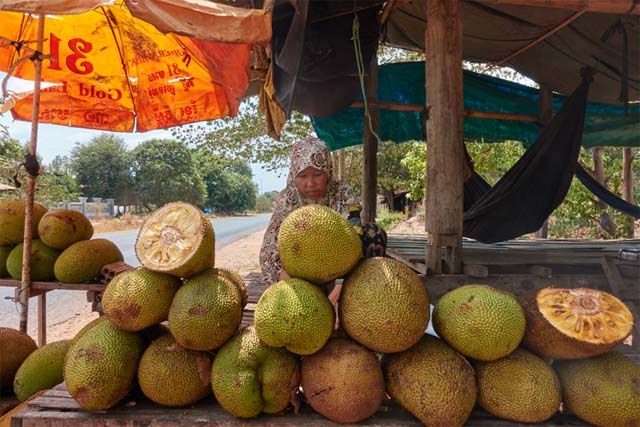
A jackfruit stand
Kratie is perched on the banks of the Mekong River, the 12th longest in the world, and in terms of human civilization, unarguably one of the most important. It’s also immensely important for the ecology of Southeast Asia, and remarkably home to an endemic bird described as recently as 2001 – the Mekong Wagtail. In order to find this attractive species we took a small boat out amongst the braided islands where the bird makes its home. We soon found a pair and watched them quietly at close quarters before turning our attention to the pod of Irrawaddy Dolphins cavorting nearby.
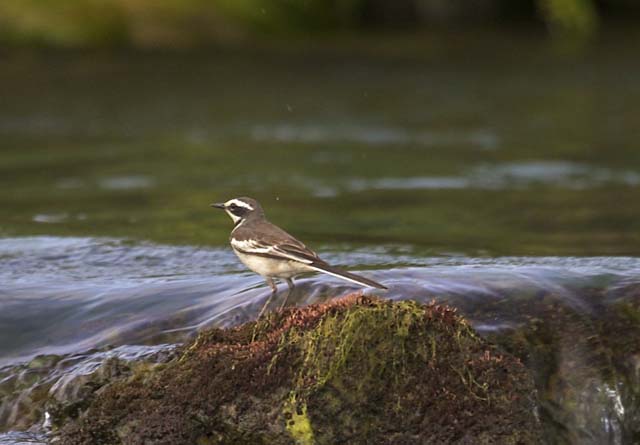
Mekong Wagtail Image: David Fisher
Our final destination was the beautiful forest of Bokor, a former hill station and now a national park. We searched the forest trails for a whole different suite of mid montane birds, unsuccessful in our search for the elusive Cambodian Partridge, we were nevertheless very satisfied with great list of exciting birds including a superb male Silver Pheasant, a young Rufous-bellied Eagle practicing its mid air catching skills, prehistoric-looking Wreathed Hornbills, and more Asian Fairy Bluebirds than I’ve ever seen. A fitting end to a memorable tour!
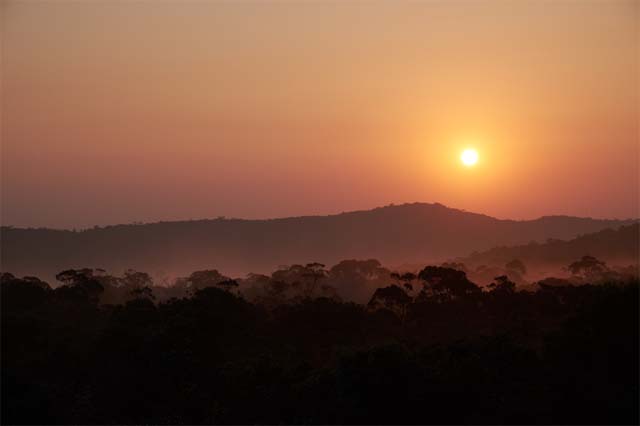
Sunrise over Bokor National Park
